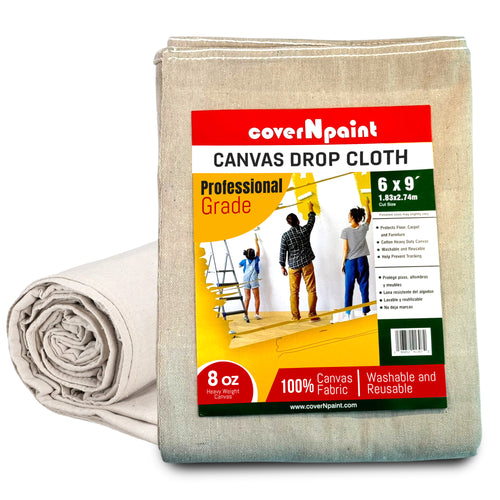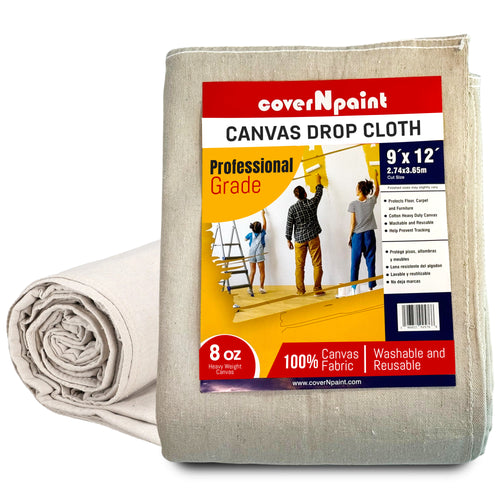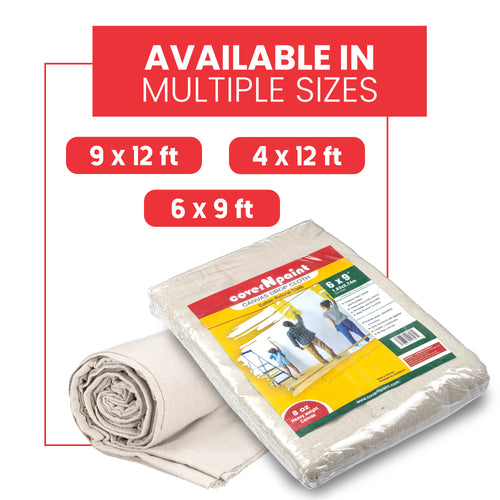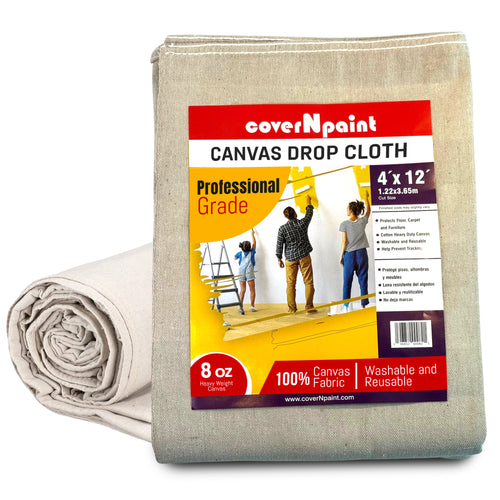Using a painters drop cloth seems straightforward—you spread it out, cover your surfaces, and start painting. But in reality, many homeowners and even professionals make critical mistakes that limit the effectiveness of their drop cloths. From choosing the wrong size to ignoring safety steps, these errors can lead to unnecessary mess, wasted money, or even accidents.
This guide breaks down the top mistakes people make when using painters drop cloths and offers expert tips to help you avoid them. Whether you’re working with a canvas drop cloth or a paint drop cloth, proper handling ensures maximum protection and durability.
Mistake 1: Choosing The Wrong Type Of Drop Cloth
Not all drop cloths are the same. Many people assume that any cloth will do, but that’s a big mistake.
-
Canvas drop cloths are durable, reusable, and best for professional projects.
-
Plastic or polyethylene paint drop cloths are cheap but can tear easily and often slip on smooth floors.
-
Paper-backed drop cloths are better for small, quick jobs but lack long-term value.
👉 Always select a drop cloth suited to the size and type of project. For sustainable choices, you can explore Eco-Friendly Advantages of Using a Canvas Painters Drop Cloth in 2025.
Mistake 2: Using The Wrong Size
A drop cloth that’s too small won’t protect your entire space, while one that’s too large can bunch up, creating tripping hazards.
Pro Tip: Measure your work area in advance and match it with the right size painters drop cloth. If needed, overlap two cloths rather than forcing one to cover too much space.
Mistake 3: Not Securing The Drop Cloth
One of the most common complaints is slipping or tripping while working on a paint drop cloth. This happens because the cloth is not secured.
-
Use painter’s tape or clips to hold the cloth in place.
-
On smooth floors, add anti-slip mats under the cloth to prevent shifting.
Ignoring this step increases accident risks, especially when ladders are involved.
Mistake 4: Overlooking Cleaning And Maintenance
Many assume drop cloths are disposable, but a quality canvas drop cloth is designed for reuse. Failing to clean and maintain it after each project shortens its lifespan.
-
Shake out excess paint chips outdoors.
-
Wash canvas drop cloths on a gentle cycle with mild detergent.
-
Air dry fully before storing to prevent mildew.
Neglecting this care can cause mold, stiffness, and poor future performance.
Mistake 5: Using Thin Plastic Drop Cloths For Heavy Projects
Thin, inexpensive plastic sheets are often marketed as drop cloths, but they don’t offer reliable protection. They rip easily, bunch up, and do little to absorb spills.
For larger or messier projects, always choose canvas drop cloths, which provide better absorption and durability.
Mistake 6: Not Covering Furniture Properly
Many painters spread clothes on the floor but forget furniture protection. A painter's drop cloth should always be draped over tables, sofas, or cabinets near your painting area.
-
Use lightweight clothes for covering furniture.
-
Secure edges with clips to keep them in place.
Mistake 7: Leaving Gaps Between Drop Cloths
Overlapping multiple drop cloths is common, but leaving gaps where they meet exposes surfaces. Even small openings can allow paint to seep through and ruin your floors.
Pro Tip: Always overlap at least 6 inches and tape the seams to create a seamless barrier.
Mistake 8: Using The Same Drop Cloth For Every Task
Different projects have different needs. For example:
-
Canvas drop cloths are ideal for walls and ceilings.
-
Plastic drop cloths work for quick furniture covering.
-
Paper-backed cloths are great for trim or small touch-ups.
Using the wrong type wastes time and reduces efficiency.
Mistake 9: Folding And Storing Incorrectly
Storing drop cloths when they are still damp or folded tightly leads to odor, mildew, and damage.
-
Always let the cloth dry completely.
-
Roll or fold loosely and store in a dry, cool area.
This simple step can extend the life of your paint drop cloth by years.
Mistake 10: Ignoring Safety While Using Drop Cloths
Drop cloths can create safety hazards if not used properly:
-
Avoid piling tools on the cloth; they can cause trips.
-
Don’t let clothes block walkways or stairways.
-
Secure corners to prevent curling.
Safety should always come first, especially in busy household or jobsite environments.
A Curiosity-Building Note
Many painters don’t realize that small adjustments in how they use, clean, and store drop cloths can dramatically extend their lifespan. From smarter folding methods to layering techniques, these overlooked steps can save significant costs and improve safety. CovernPaint USA has seen both beginners and professionals surprised at how these strategies make a noticeable difference in performance.
Benefits Of Avoiding These Mistakes
-
Saves money by extending the life of reusable drop cloths.
-
Improves safety by preventing slips, trips, and paint transfer.
-
Ensures professional results with cleaner surfaces and better protection.
-
Supports sustainability when canvas cloths are maintained and reused properly.
FAQs
Q1: What is the biggest mistake people make with painters drop cloths?
Using thin plastic drop cloths for large projects, which don’t provide enough protection.
Q2: Can canvas drop cloths be reused after washing?
Yes, high-quality canvas cloths can be washed, dried, and reused multiple times.
Q3: How do I keep a paint drop cloth from slipping?
Secure it with painter’s tape or use anti-slip pads underneath.
Q4: Should I overlap drop cloths?
Yes, overlap at least 6 inches and tape seams to prevent paint from seeping through.
Q5: How do I store drop cloths properly?
Let them dry fully, fold or roll loosely, and store in a cool, dry area.













